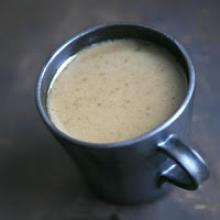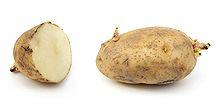For Christmas I received a rice cooker. I can make rice now! You don't know how revolutionary this is: I have never once cooked rice properly. I had given up on it, in fact. Now that I can cook perfect rice just by pushing a lever, I have been investigating all the delicious possibilities. There's a lot more to rice than the standard American long grain white rice!
There are over 40,000 different varieties of rice in the world. Most varieties are exquisitely local, being grown and distributed only throughout a single county or small region of the world. All rice starts out as brown rice, which is simply the whole rice grain (actually a seed). Some forms of rice take an extra step in production to remove the brown coating of rice bran from each grain, thus producing white rice.
The rice bran has significant nutritional value, which is why people always nag you to choose brown rice over white. (Among other things, brown rice is an excellent source of thiamine, and cultures which eat white rice exclusively have often found themselves plagued by Beriberi.) However, it must be said that white rice has a smoother texture and a milder flavor, which many people find more pleasing.
Long grain rice tends to be less sticky than short grain rice. But as a general rule, rice varieties should not be substituted in a recipe, unless it's a real rice emergency. Each kind of rice is distinct enough that the end result just won't be the same if you use a different rice. The world won't come to an end if you use basmati rice in a recipe that calls for jasmine rice, but you will probably notice the difference!
Wehani Rice
My rice cooker came with an extra gift: a packet of Wehani rice. This is a trademark variety of brown rice which was developed by the Lundberg Family Farm in California, and descended from basmati rice. It has all the nutrition of brown rice, plus a wonderful rich, almost floral aroma.
Basmati Rice
Basmati rice can be either white or brown. It is a long grain rice which is popular in India, where they take it very seriously indeed. Most strains of basmati rice are considered "fragrant," with a characteristic rich smell and delicious taste. Unlike most rice, basmati rice is not sticky when cooked but loose, almost like pasta. Basmati rice also has a low glycemic index, which makes it a good choice for diabetics and carb-watchers.
Jasmine Rice
This long grain rice is a favorite in Thailand, where its delicate floral fragrance (whence the name) complements the range of traditional Thai flavors. It has a mid-range stickiness - stickier than a basmati rice, but not as sticky as a short-grain rice.
Aborio
This is a short grain rice variety which is a favorite in Italy, where it is used to make risotto. Arborio rice is traditionally cooked slowly in a pan on the stove top, with lots of liquid added at regular intervals, creating almost a soupy texture.
Wild Rice
Wild rice is unrelated to "real" rice (Oryza sativa), although it has a similar form and structure. Wild rice is the grains of four different wild grasses which grow at the fringes of lakes and ponds in North America. Compared to other types of rice, wild rice is higher in protein, lysine, fiber, and a host of vitamins.









